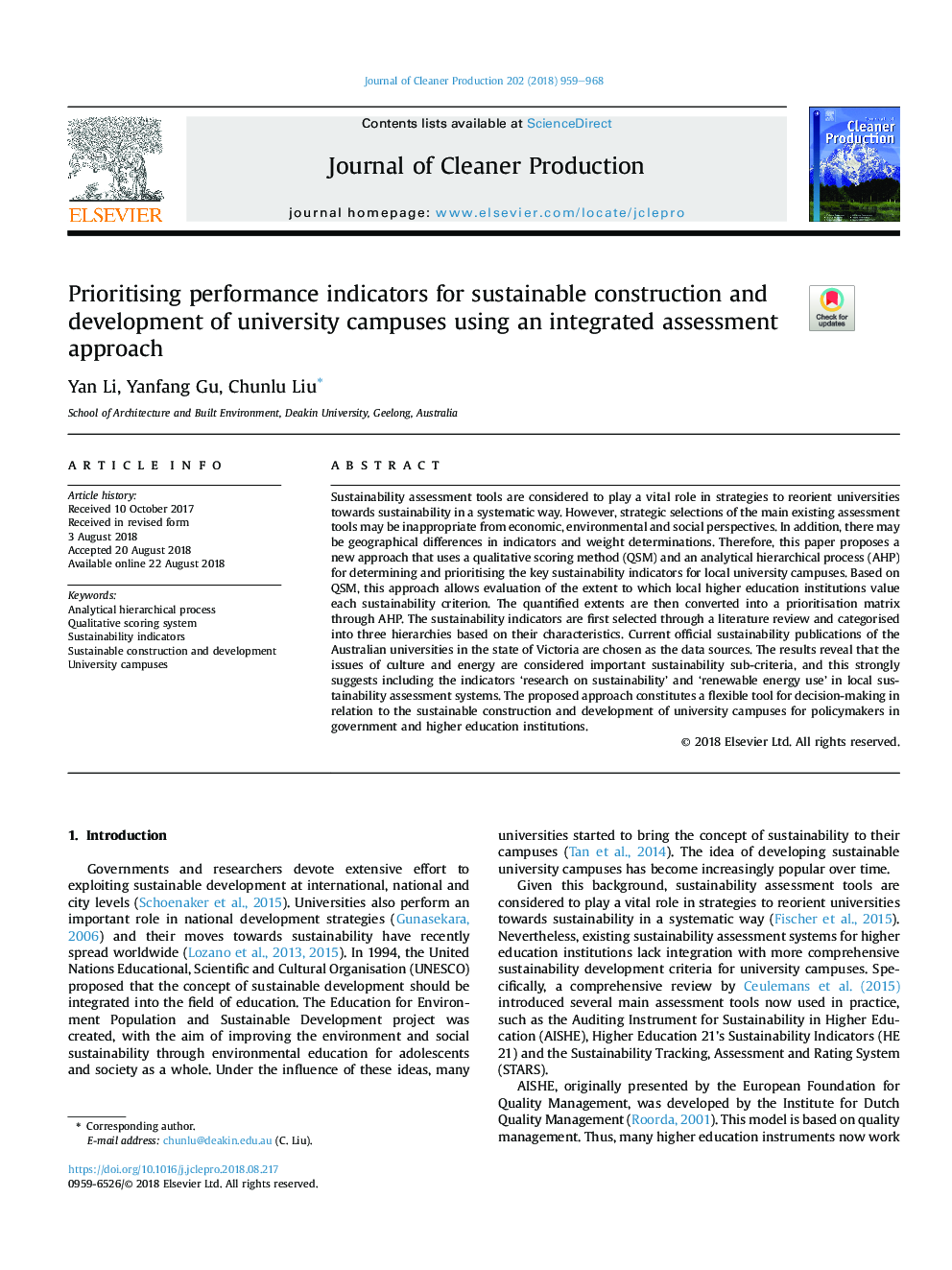| Article ID | Journal | Published Year | Pages | File Type |
|---|---|---|---|---|
| 10136405 | Journal of Cleaner Production | 2018 | 10 Pages |
Abstract
Sustainability assessment tools are considered to play a vital role in strategies to reorient universities towards sustainability in a systematic way. However, strategic selections of the main existing assessment tools may be inappropriate from economic, environmental and social perspectives. In addition, there may be geographical differences in indicators and weight determinations. Therefore, this paper proposes a new approach that uses a qualitative scoring method (QSM) and an analytical hierarchical process (AHP) for determining and prioritising the key sustainability indicators for local university campuses. Based on QSM, this approach allows evaluation of the extent to which local higher education institutions value each sustainability criterion. The quantified extents are then converted into a prioritisation matrix through AHP. The sustainability indicators are first selected through a literature review and categorised into three hierarchies based on their characteristics. Current official sustainability publications of the Australian universities in the state of Victoria are chosen as the data sources. The results reveal that the issues of culture and energy are considered important sustainability sub-criteria, and this strongly suggests including the indicators 'research on sustainability' and 'renewable energy use' in local sustainability assessment systems. The proposed approach constitutes a flexible tool for decision-making in relation to the sustainable construction and development of university campuses for policymakers in government and higher education institutions.
Related Topics
Physical Sciences and Engineering
Energy
Renewable Energy, Sustainability and the Environment
Authors
Yan Li, Yanfang Gu, Chunlu Liu,
